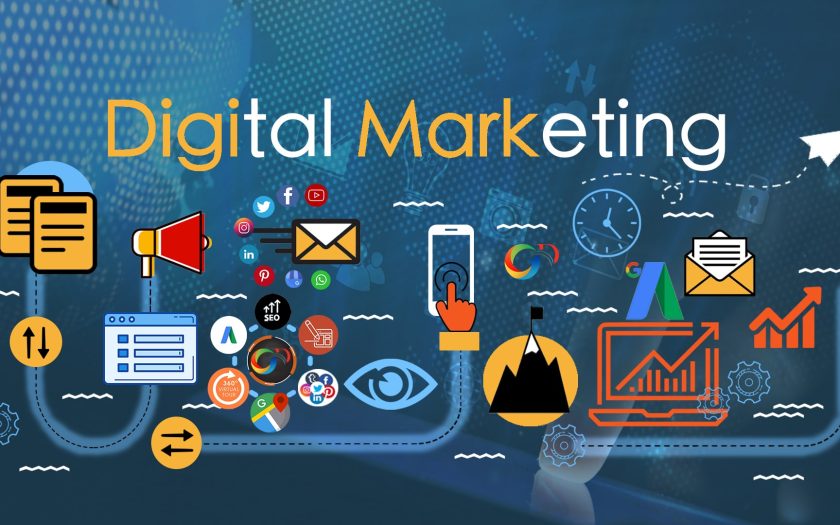Introduction to Digital Marketing
Digital marketing has revolutionized the way businesses connect with customers, promote their products, and drive growth in the digital age. It encompasses a diverse range of online channels and strategies, including search engine optimization (SEO), social media marketing, content marketing, email marketing, and more. From startups to multinational corporations, digital marketing offers unprecedented opportunities to reach target audiences, engage prospects, and achieve measurable results in today’s competitive landscape.
Understanding the Importance of Digital Marketing
Reach and Accessibility
Digital marketing provides businesses with unparalleled reach and accessibility to global audiences. With the proliferation of internet-enabled devices and online platforms, businesses can connect with potential customers across geographic boundaries, regardless of time or location, expanding their market reach and driving brand awareness.
Targeted Audience Engagement
One of the key advantages of digital marketing is the ability to target specific audience segments with precision and accuracy. Through data-driven techniques such as demographic targeting, behavioral targeting, and remarketing, businesses can tailor marketing messages and content to resonate with the interests, preferences, and needs of their target audience, fostering personalized engagement and driving conversions.
Measurable Results and ROI
Digital marketing offers robust analytics and tracking capabilities that enable businesses to measure the performance and ROI of their marketing campaigns with precision. From website traffic and conversion rates to click-through rates and customer acquisition costs, businesses can analyze key metrics in real-time, optimize campaigns on the fly, and allocate resources effectively to maximize returns on investment.
Key Components of Digital Marketing
Search Engine Optimization (SEO)
SEO is the process of optimizing websites and content to rank higher in search engine results pages (SERPs) and attract organic traffic. By optimizing website structure, content quality, keyword usage, and backlink profile, businesses can improve visibility, drive targeted traffic, and increase brand credibility and trustworthiness.
Content Marketing
Content marketing involves creating and distributing valuable, relevant, and engaging content to attract and retain a clearly defined audience. From blog posts and articles to videos, infographics, and podcasts, businesses can leverage various content formats to educate, entertain, and inspire their target audience, driving brand awareness, authority, and loyalty over time.
Social Media Marketing
Social media marketing focuses on leveraging social media platforms such as Facebook, Instagram, Twitter, LinkedIn, and TikTok to connect with audiences, build relationships, and drive engagement and conversions. By creating compelling content, fostering community engagement, and leveraging targeted advertising, businesses can expand their reach, amplify their message, and drive traffic and sales from social channels.
Email Marketing
Email marketing involves sending targeted, personalized email campaigns to prospects and customers to nurture relationships, promote products, and drive sales. By segmenting email lists, crafting compelling subject lines and content, and optimizing send times and frequency, businesses can deliver relevant messages that resonate with recipients, driving engagement, conversions, and customer loyalty.
The Digital Marketing Process
Define Goals and Objectives
The first step in the digital marketing process is defining clear goals and objectives that align with business objectives and target audience needs. Whether it’s increasing brand awareness, driving website traffic, generating leads, or boosting sales, establishing measurable goals provides direction and focus for digital marketing initiatives.
Conduct Audience Research
Next, conduct comprehensive audience research to understand the demographics, interests, behaviors, and pain points of your target audience. By gaining insights into audience preferences and needs, businesses can tailor their digital marketing strategies and content to resonate with their target audience effectively.
Develop a Digital Marketing Strategy
Based on audience research and defined goals, develop a comprehensive digital marketing strategy that outlines key tactics, channels, and content formats to achieve desired outcomes. This may include SEO optimization, content creation, social media engagement, email marketing campaigns, and paid advertising initiatives, tailored to the unique needs and preferences of your target audience.
Implement and Execute
Once the digital marketing strategy is developed, implement and execute marketing campaigns and initiatives across chosen channels and platforms. This involves creating and publishing content, optimizing website performance, managing social media accounts, and deploying email campaigns to engage with audiences, drive traffic, and achieve desired outcomes.
Monitor, Measure, and Optimize
Continuously monitor and measure the performance of digital marketing campaigns against established goals and key performance indicators (KPIs). Use analytics tools and tracking metrics to evaluate campaign effectiveness, identify areas for improvement, and make data-driven decisions to optimize campaigns, maximize ROI, and drive continuous improvement over time.
Conclusion
In conclusion, digital marketing offers businesses unprecedented opportunities to reach, engage, and convert customers in today’s digital age. By leveraging a mix of SEO, content marketing, social media marketing, and email marketing strategies, businesses can expand their reach, drive targeted traffic, and achieve measurable results that contribute to long-term growth and success in the competitive marketplace.





